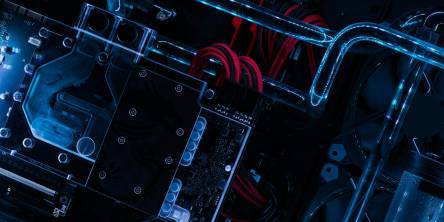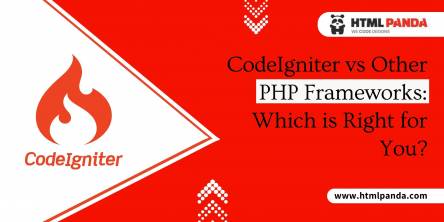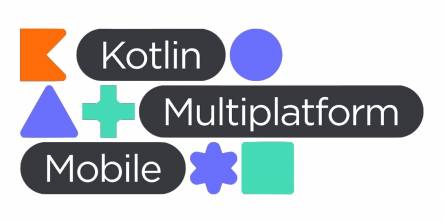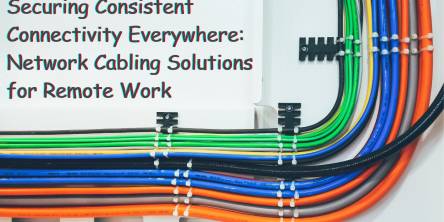Essentials You Need to Know Before Designing IoT Infrastructure
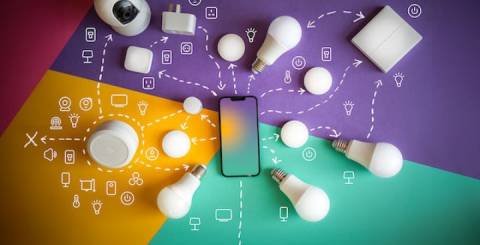
In the dynamic realm of the Internet of Things (IoT), establishing a resilient and efficient infrastructure is imperative for the prosperity of any IoT initiative. Whether working on a smart home system, industrial automation, or healthcare solutions, thoughtful evaluation of diverse factors is indispensable. This blog will allow me to delve into the critical considerations for designing IoT infrastructure, touching upon sensor hardware, connectivity, data processing, user interface (UI), scalability, data management, and more.
Critical Considerations For Designing IoT Infrastructure
- Sensor Hardware: The Foundation of IoT - The choice of sensor hardware is fundamental to any IoT infrastructure. Sensors serve as the sensory input for the Internet of Things (IoT), gathering information from the physical environment. It is crucial to consider sensors' precision and dependability, power usage, and the environmental circumstances in which they will be deployed. Furthermore, assessing sensors' compatibility with current and upcoming devices is essential for ensuring smooth integration.
- Connectivity: Bridging the Gap - Connectivity forms the backbone of IoT infrastructure. Selecting the appropriate communication protocols and technologies is pivotal. Low-power, wide-area networks (LPWAN), Wi-Fi, Bluetooth, and cellular networks are among the options. The choice depends on the IoT application's range, data transfer speed, and power requirements. Security considerations must also be addressed to safeguard data during transmission.
- Data Processing: Turning Raw Data into Insights - The vast amount of data generated by IoT devices requires efficient processing. Edge computing, processing data near the source, reduces latency and bandwidth usage. Cloud computing provides scalability and storage capabilities. Striking the right balance between edge and cloud processing depends on the application's specific requirements. Data analytics and machine learning algorithms can also extract meaningful insights from raw data.
- User Interface (UI): Enhancing User Experience - A well-designed user interface is essential for user acceptance and satisfaction. The UI should be intuitive and user-friendly, whether it's a mobile app, web portal, or a dedicated device interface. Consider the diverse user base and design interfaces that accommodate different levels of technical expertise. Real-time monitoring, alerts, and actionable insights enhance user experience.
- Scalability: Future-Proofing Your IoT Infrastructure - Designing an IoT infrastructure with scalability is critical for adapting to future growth and changes. Ensure that the architecture can seamlessly accommodate increasing devices and users. Scalability should not compromise performance, security, or data integrity. Adopting modular and flexible architectures enables easier integration of new features and technologies as they emerge.
- Security: Safeguarding Against Threats - Security is paramount in IoT infrastructure design. The interconnected nature of devices makes them vulnerable to cyber threats. Implement robust authentication, encryption, and access control mechanisms to protect data and devices. Regular security audits and updates are crucial to staying ahead of evolving security threats. Building security into the design from the outset is more effective than retrofitting it later.
- Interoperability: Ensuring Seamless Integration - Interoperability is essential for smoothly integrating diverse IoT devices and platforms. Adopting open standards and protocols facilitates communication between different devices and ecosystems. This promotes collaboration, allowing devices from other manufacturers to work together seamlessly. An interoperable IoT infrastructure reduces development costs and accelerates time-to-market for new solutions.
- Power Management: Prolonging Device Lifespan - Effective power management is crucial for remote or inaccessible IoT devices. Implementing low-power design principles, optimizing sleep modes, and utilizing energy-efficient components extend the lifespan of devices and reduce maintenance requirements. Energy harvesting technologies, such as solar or kinetic energy, can also be integrated to enhance sustainability.
- Data Management: Handling the Deluge of Data - With the proliferation of IoT devices, managing the enormous volume of data becomes a significant challenge. Implementing adequate data storage, retrieval, and archival strategies is essential. Consider data retention policies, data lifecycle management, and data governance practices. Data quality and integrity are paramount to ensuring that insights derived from analytics are accurate and reliable.
- Regulatory Compliance: Navigating the Legal Landscape - Compliance with regulations and standards is critical in IoT infrastructure design. Different industries and regions may have specific requirements regarding data privacy, security, and environmental impact. Stay informed about relevant regulations and design your IoT solution to adhere to these standards. Taking a proactive approach to compliance reduces legal risks and enhances the trustworthiness of your IoT ecosystem.
Final Words
In conclusion, designing a successful IoT infrastructure requires a holistic approach that considers many factors. You can work with a professional IoT product design and development company that can help you with everything from selecting sensor hardware to ensuring regulatory compliance. They can cover all aspects that play a crucial role in your IoT solution's overall functionality, security, and user experience. By carefully addressing these fundamental considerations, developers and organizations can create robust, scalable, and future-proof IoT infrastructures that deliver value to users and stakeholders alike.
Similar Articles
In today's technologically advanced landscape, understanding heat distribution is critical for enhancing efficiency and safety across various sectors. Infrared thermography, a pivotal imaging technique, has revolutionized how professionals view and analyze thermal performance.
In this digital age, there are many options available for marketing, but the one that stands out as one that can transform the marketing realm is programmatic connected TV (CTV). The programmatic CTV approach for advertising shows the changing trend in how brands would like to connect with their audience.
PHP has a dominant market position, with over 79% of websites powered to some degree. Developers majorly utilize organized and leveled PHP basic functions, known as PHP frameworks, to create flexible output.
The nonstop hum of machines around us, from the humongous industrial complexes to the processors within the gadgets, shapes our everyday lives. These mechanical advancements have become essential, driving everything from fundamental necessities to our vehicles, airplanes, and so forth.
New methods of managing a Pilate business are transforming the way studios operate. It simplifies routine tasks and helps fitness businesses to grow and facilitate their customers in various ways.
Discover if the S23 Ultra case is compatible with the S24 Ultra. Get insights on fit, protection, and functionality in this comparison.
In the era of astoundingly quick technological progress, organizations are increasingly feeling the need to adjust to the evolving market demands and their requirements by embracing digital transformation
With the rise of mobile devices and the ever-growing demand for cross-platform solutions, businesses are constantly seeking efficient ways to develop applications that can be used on multiple platforms. This is where Kotlin Multi Platform comes into play. Kotlin Multi-platform is a versatile technology that allows developers to write code once and deploy it on various platforms such as Android, iOS, and web.
Discover reliable network cabling solutions ensuring seamless connectivity for remote work. Enhance productivity with consistent connections anywhere.

